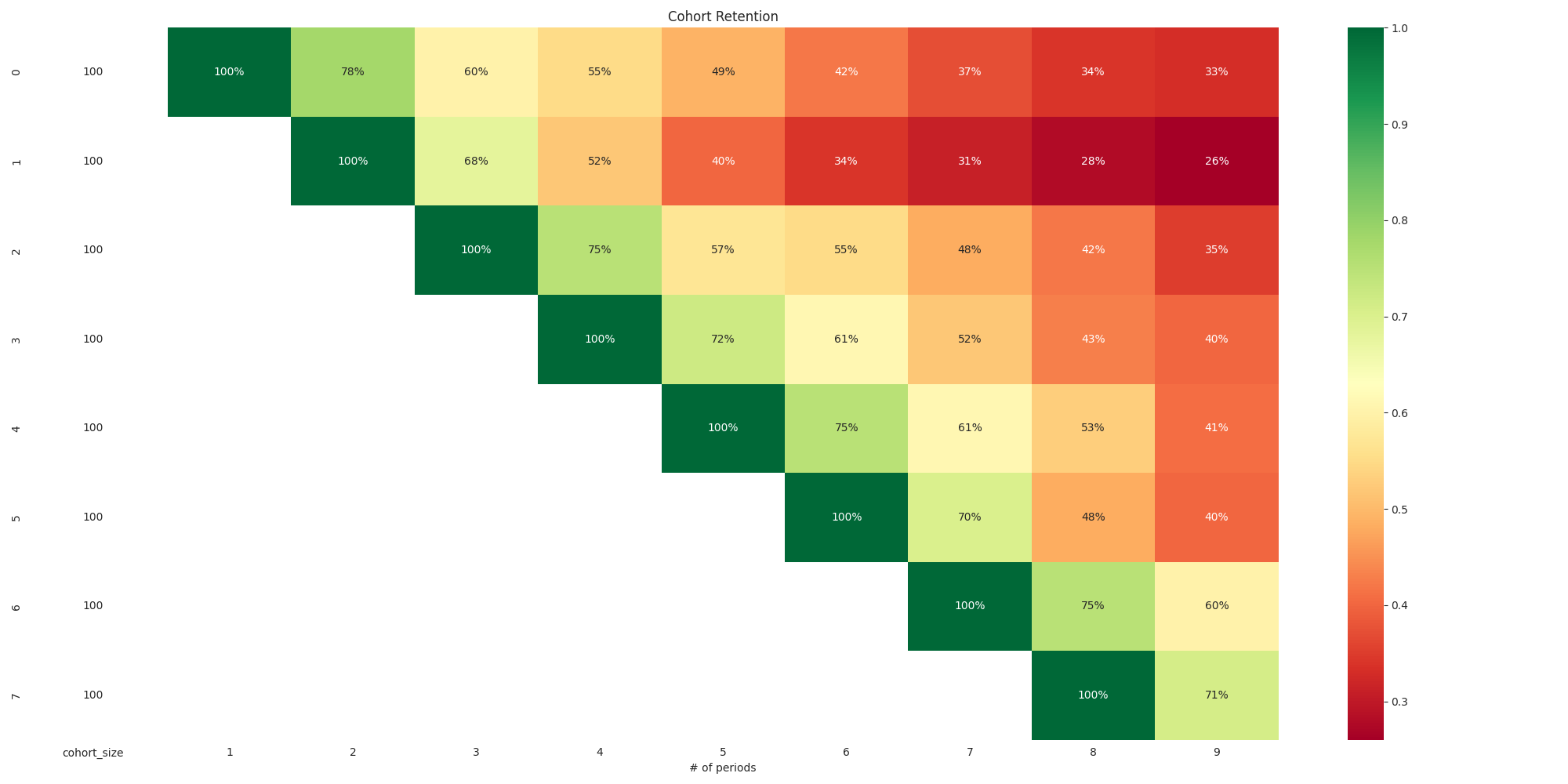https://github.com/plexagon/lucius-ltv
A simple multicohort LTV calculator for subscriptions
https://github.com/plexagon/lucius-ltv
Last synced: 5 months ago
JSON representation
A simple multicohort LTV calculator for subscriptions
- Host: GitHub
- URL: https://github.com/plexagon/lucius-ltv
- Owner: plexagon
- License: mit
- Created: 2021-12-17T17:38:03.000Z (over 3 years ago)
- Default Branch: main
- Last Pushed: 2023-03-07T17:34:11.000Z (about 2 years ago)
- Last Synced: 2024-08-11T11:32:11.506Z (8 months ago)
- Language: Python
- Size: 342 KB
- Stars: 10
- Watchers: 1
- Forks: 1
- Open Issues: 0
-
Metadata Files:
- Readme: README.md
- License: LICENSE
Awesome Lists containing this project
- awesome-marketing-machine-learning - lucius-ltv - ltv.svg?style=social) (Churn / CLV)
README

# Lucius LTV
A Python simple multi-cohort LTV calculator library for subscription-based products.
## Installation
```shell
pip install lucius-ltv
```## Building a cohort matrix
To use this library, the first step is to build a **Cohort retention matrix** for your product.
To build a cohort matrix:
* For each period of interest (week/month/year - depending on your subscription)
* Retrieve the number of users that started paying for the first time
* Track those users over time to observe how many where still alive in the following periods
* Stack them in order to obtain a pd.DataFrame resembling this:| 2022 | 2021 | 2020 | 2019 | 2018 | 2017 | 2016 | 2015 |
|------|------|------|------|------|------|------|------|
| 100 | 95 | 82 | 78 | 75 | 71 | 68 | 63 |
| | 120 | 109 | 99 | 87 | 80 | 67 | 66 |
| | | 101 | 90 | 80 | 77 | 73 | 68 |
| | | | 130 | 122 | 115 | 108 | 99 |
| | | | | 95 | 91 | 85 | 67 |
| | | | | | 102 | 90 | 81 |
| | | | | | | 90 | 80 |Alternatively if you are just trying out this library, you can generate a retention cohort matrix by calling `generate_synthetic_cohort_matrix`. An example of this is contained in the sample file, `sample.py` shipped with this project.
## Fitting the model
Once you have a cohort matrix, you can finally fit the sBG model that will predict LTV.
Behind the scenes this library implements "Fader, Peter and Hardie, Bruce, How to Project Customer Retention (May 2006)" (Available at SSRN: https://ssrn.com/abstract=801145
or http://dx.doi.org/10.2139/ssrn.801145) using the powerful Bayesian Inference library [pymc3](https://docs.pymc.io/en/v3/).To fit the pymc model, simply run:
### Basic fit
```python
inference_data, model = fit_sbg_model(
cohort_matrix,
periods=10, # Number of projected periods
)
```### Fit with "all_users"
If your product offers free trials or initial offers of any kind, you can add a conversion layer to the model, by specifying the starting users:
```python
inference_data, model = fit_sbg_model(
cohort_matrix,
all_users=[150, 147, 180, 160, 130, 140, 160],
periods=10, # Number of projected periods
)
```### Fit with true parameters
If you are testing the model with synthetic data you can specify the true alpha/beta sbg parameter values (those won't be used in fitting, but to generate reference/comparison timeseries)
```python
inference_data, model = fit_sbg_model(
cohort_matrix,
periods=10, # Number of projected periods
true_a=1.5,
true_b=2.3,
)
```### Extra pymc sampling parameters
If you want you can pass extra arguments that will be re-routed to the pymc sampler, like `target_accept`, `steps`, `tune`, etc..
## Analyzing results
The returned `inference_data` is a standard Arviz InferenceData object will contain a posterior estimate of the modelled variables as returned by pymc3.
The most interesting variables are:* `inference_data.posterior['ltv']` the LTV timeseries
* `inference_data.posterior['conversion_rate_by_cohort']` the conversion rates if you did the fit with `all_users`
* `inference_data.posterior['ltv']` the true LTV timeseries if you provided true values of alpha and betaPlease note that these are trace objects resulting from the sampling process,
therefore each variable will have multiple possible values representing the sampling of the posterior distribution.
From this sampling you can obtain high-density intervals using [`np.percentile`](https://numpy.org/doc/stable/reference/generated/numpy.percentile.html) or [`az.hdi`](https://arviz-devs.github.io/arviz/api/generated/arviz.hdi.html).### Empirical LTV from cohort matrix
You can also compute the empirical LTV starting from the cohort matrix, allowing you to compare empirical LTV to the projected one.
```python
empirical_ltv = compute_empirical_ltv(cohort_matrix=cohort_matrix)
```## Plots
The library also includes a few methods for quickly plotting results.
### LTV
Plot the user lifetime value with surrounding HDI
```python
fig, ax = plt.subplots(figsize=(20, 10))
plot_ltv(empirical_ltv, inference_data=inference_data, ax=ax)
fig.suptitle(f'Lifetime value')
ax.legend()
ax.grid()
```
### Conversion Rate
Plot the conversion rate by cohort with sorrounding HDI
```python
fig, ax = plt.subplots(figsize=(20, 10))
plot_conversion_rate(inference_data, ax=ax)
fig.suptitle(f'Conversion Rate')
ax.grid()
```
### Cohort matrix
Plot the cohort matrix retention rates
```python
plot_cohort_matrix_retention(cohort_matrix, 'Cohort Retention')
```
### Posterior distributions vs true values
Plot the posterior distributions vs true values
```python
fig, (ax1, ax2, ax3) = plt.subplots(3, figsize=(12, 12))
az.plot_posterior(inference_data, var_names=("alpha",),
ref_val=true_alpha,
ax=ax1)
az.plot_posterior(inference_data, var_names=("beta",),
ref_val=true_beta,
ax=ax2)
az.plot_posterior(inference_data, var_names=("conversion_rate",),
ref_val=1/true_conversion_rate,
ax=ax3)
fig.suptitle(f'True v Recovered values')
```



